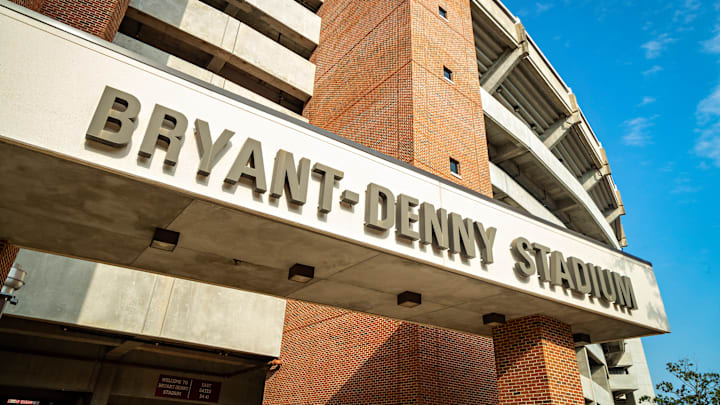Honoring Alabama Crimson Tide legend, Nick Saban is always a good idea. It is being reported the University of Alabama will do it again on Friday. It is expected the latest honor will be 'Nick Saban Field' at Bryant-Denny Stadium.
Naming the field after college football's GOAT is no small thing. But it is not big enough for the man who brought the Crimson Tide six National Championships. And those championships are only part of what Nick and Terry Saban have meant to the University of Alabama, Tuscaloosa, the state of Alabama; and the SEC.
Instead of 'Nick Saban Field', Friday's announcement should be a change to Bryant-Saban Stadium. George 'Mike' Denny is an Alabama legend. He is rightly honored with Denny Chimes, and adding 'Denny Field' at Bryant-Denny Stadium would honor him appropriately. A guess is, that change will happen someday. It should happen now.
There was a 'Denny Field' east of the current stadium site from 1915 through 1928. In 1915 the site was named University Field, but during the 1920 season, it was renamed for Denny. Before University Field, Alabama's football games were played on The Quad. Some reported history is that games were held on the much smaller Woods Quad, early in the Tide's history.
Denny Stadium opened in 1929, with a capacity of 12,000. Within a decade the capacity doubled. In 1946, endzone bleachers were added and the capacity grew to 31,000. When Paul 'Bear' Bryant won the first of his six National Championships, Denny Stadium held 60,000. The current name 'Bryant-Denny' was approved by the Alabama State Legislature in 1975.
When news of the change came out on Thursday morning, it appeared many Alabama football fans were more disappointed than pleased. Many strong opinions were voiced that Saban's name on the field was not near enough.
If the University's Honorary Degrees and Recognition Committee is paying attention to the opinions of Alabama Crimson Tide fans, perhaps they will do the right thing on Friday.
Note: Stadium and field history provided by the Paul W. Bryant Museum.
